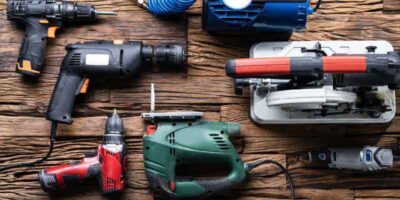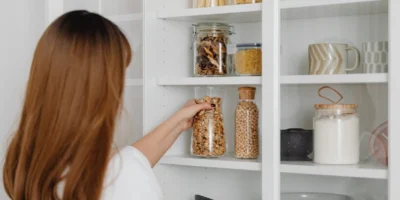The demands on a floor leveling are not easy to meet: The suitable system has to compensate for the unevenness of the floor, in the case of boards the movements of the wood participate to some extent, provide an absolutely flat surface – but at the same time the overall height of the whole is not too large. Our guide shows you how to level a floor correctly.
Level a floor correctly: wooden floorboards with liquid screed
All this is done by a balancing mass such as “New on Old” (Lugato). It is a plastic-cement mixture that is poured on the boards in a thickness of 5 to 20 mm, where it sets to a hard but flexible plane.
The secret: The mass enters into a firm bond with the plank floor with the help of a primer and a stacked reinforcing fabric. However, to succeed in this incidentally quite “lively” work extensive preparatory work is necessary to level a floor correctly.
Leveling compound for wooden floorboards: what should be considered?
It is important that the mass can not run away at any point, so all joints must be tight . The edge insulation strip, which you stick to the wall, prevents a sound bridge between floor and walls. And finally you need to re-screw the planks to minimize feathering.
If you want to compensate for different deposits, you must install a movement joint in the leveling compound. Under no circumstances should the layer pass, otherwise there will be cracks in the surface. Stick the transition with a Styrofoam strip.
Balance wooden floor with floating screed: instructions
Step 1/12: Initial state of the floorboard

This is what the floor looked like after removing the old PVC flooring. The area under the former oven is tiled, the wooden planks are added with PVC glue.
Step 2/12: Remove adhesive and varnish residues

With a single-disc grinding machine and a 24-wheel grinding wheel, all adhesive and varnish residues are removed.
Step 3/12: Screw the boards
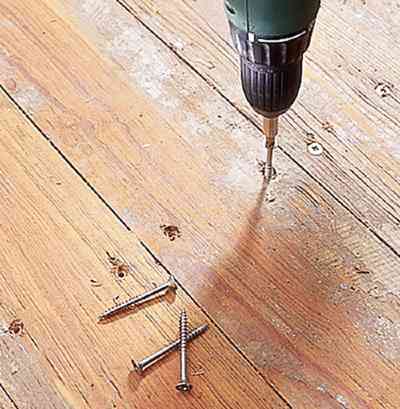
The boards must be screwed in each beam with two Spax screws.
Step 4/12: Seal joints
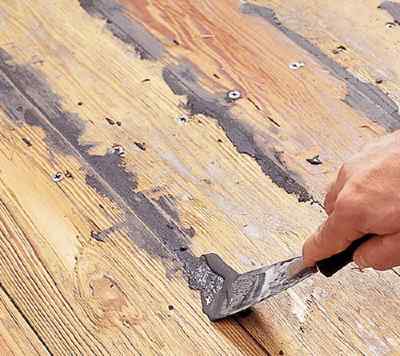
Lubricate all larger joints with the balancing mass in a thicker consistency (add less water).
Step 5/12: Apply the primer
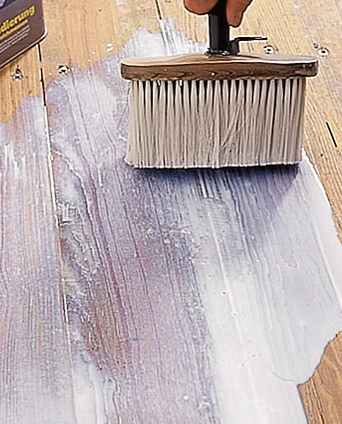
The primer regulates the suction behaviour of the wood and improves adhesion. It is precisely matched to the compensatory mass.
Step 6/12: Glue the recess
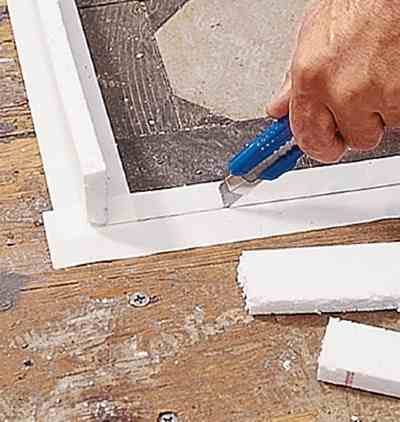
At the transition to the tiles, glue a styrofoam strip with adhesive strips onto the joint as a recess.
Step 7/12: Angle bar

The end of the door is formed with an angle bar that corresponds to the construction height of the balancing layer.
Step 8/12: Glue edge insulation strips
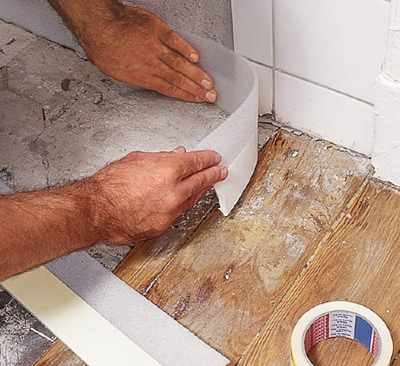
All around, glue a border insulation strip with double-sided tape to the wall.
Step 9/12: Tacking the reinforcement fabric

When tacking the reinforcement fabric, let the webs overlap by 5 cm.
Step 10/12: Mark height

To mark the height of 2 cm all around the walls, simply place a 2cm thick spirit level flat on the side.
Step 11/12: Check tightness

Now check all connections again for tightness before the leveling mass is stirred and tipped onto the ground.
Step 12/12: Distribute the mass

Once the mass has been introduced, it must be distributed and vented. The best way to do this is with a rough broom. You should work backwards towards the room door.
Instead of a leveling mass, you can also create a flat surface with plate materials. For this purpose, laying boards and floor boards made of plaster are available. They are to be laid without touched mass, but these raw floors are much thicker (from approx. 20 mm, flow screed from 5 mm). But they have one thing in common: they take it up with all the coverings.
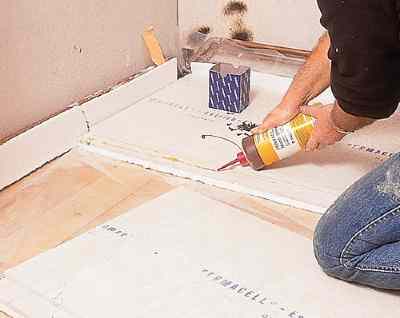
Alternative: laying chipboard
Instead of leveling compound, you can also create a flat surface with board materials. For this, laying chipboards and gypsum floor slabs are available. They are to be laid without mixed mass, however, these raw soils are much thicker (from about 20 mm, floating screed from 5 mm). But they have one thing in common: they absorb it with all the rubbers.
 Gerhardt Richter is a writer and a trainer at trade technical colleges, specializing in carpentry, plumbing, mechanics and construction.
Gerhardt Richter is a writer and a trainer at trade technical colleges, specializing in carpentry, plumbing, mechanics and construction.



